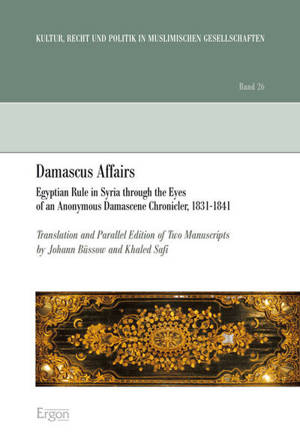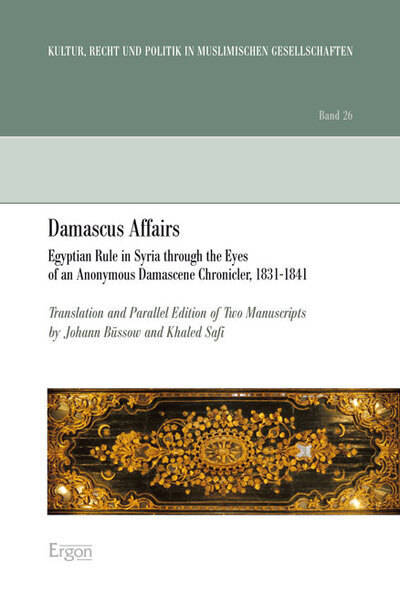
Door een staking bij bpost kan je online bestelling op dit moment iets langer onderweg zijn dan voorzien. Dringend iets nodig? Onze winkels ontvangen jou met open armen!
- Afhalen na 1 uur in een winkel met voorraad
- Gratis thuislevering in België vanaf € 30
- Ruim aanbod met 7 miljoen producten
Door een staking bij bpost kan je online bestelling op dit moment iets langer onderweg zijn dan voorzien. Dringend iets nodig? Onze winkels ontvangen jou met open armen!
- Afhalen na 1 uur in een winkel met voorraad
- Gratis thuislevering in België vanaf € 30
- Ruim aanbod met 7 miljoen producten
Zoeken
Omschrijving
The anonymous Arabic chronicle presented in this book offers a captivating account of a decisive decade in modern Middle Eastern history. It covers, among other events, the Egyptian invasion of Syria in 1831 and a number of popular uprisings, and includes a first-hand account of the so-called 'Damascus Affair' of 1840, when Jewish citizens of Damascus were put on trial for ritual murder. The study highlights that the chronicle not only provides evidence for historical facts, but also documents the ways Arab inhabitants of the Levant discussed the social and political realities of their time. Two different versions of the text have been preserved and both are likely to have been intended for public reading in coffeehouses and literary salons. The variations between them show how the text was revised to take into account the expectations of various readers and listeners. The English part of the book contains an extensive introduction and a translation of the chronicle, together with a chronology, a biographical appendix, maps and a glossary. The Arabic part comprises an edition of the two versions of the chronicle in synoptic form.
Specificaties
Betrokkenen
- Auteur(s):
- Uitgeverij:
Inhoud
- Aantal bladzijden:
- 384
- Taal:
- Arabisch, Engels
- Reeks:
- Reeksnummer:
- nr. 26
Eigenschappen
- Productcode (EAN):
- 9783899139068
- Verschijningsdatum:
- 1/01/2013
- Uitvoering:
- Paperback
- Formaat:
- Trade paperback (VS)
- Afmetingen:
- 155 mm x 231 mm
- Gewicht:
- 656 g

Alleen bij Standaard Boekhandel
+ 97 punten op je klantenkaart van Standaard Boekhandel
Beoordelingen
We publiceren alleen reviews die voldoen aan de voorwaarden voor reviews. Bekijk onze voorwaarden voor reviews.











